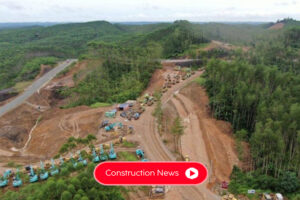Indonesia, a sprawling archipelago abundant in natural resources, faces a significant challenge in evenly distributing development, particularly in Eastern Indonesia. Despite being home to thousands of islands, the bulk of infrastructure development and economic activity has historically centered around Java Island, given its dense population and status as the seat of government.
Traditionally, infrastructure development and economic activities have been concentrated on Java Island. This is because Java Island has a densely populated area, albeit smaller than other Indonesian islands such as Papua, Kalimantan, and Sulawesi. In 2015, Java Island had a population of 145 million, contributing 60% to the total population of Indonesia.
Moreover, the capital city and government center are also located on Java Island. This is the reason why development seems to be centralized on this island. The development gap is undeniable and greatly felt by the Indonesian people in other parts of the country.
However, this centralization has left other regions, especially those in the east, feeling a palpable development gap. Recognizing this disparity, the government has been actively pursuing policies to stimulate economic activities across the nation and narrow the economic divide between regions.
In response to this imperative, the government has embarked on various initiatives aimed at promoting regional development, with a particular focus on infrastructure transformation. One of the key strategies is the prioritization of National Strategic Projects (PSN), high-impact endeavors spanning sectors such as transportation, energy, telecommunications, and more.
These projects, dispersed throughout the Indonesian archipelago, encompass a wide range of initiatives designed not only to bolster physical infrastructure but also to foster economic growth, food security, technological advancement, and education in underserved regions.
Additionally, the government has been committed to bridging the infrastructure gap, a long-standing issue stemming from insufficient investment in critical sectors. Despite progress in recent years, Indonesia still trails behind many of its peers in infrastructure development, posing a hindrance to broader economic growth.
Efforts to address this gap include ongoing investments in infrastructure projects, especially in eastern Indonesia, where the need for development is particularly acute. The government’s focus on narrowing the infrastructure deficit is seen as a crucial step toward accelerating national development and fostering greater regional equality.
Promoting Economic Growth in Eastern Indonesia
Several regions in Indonesia experiencing an infrastructure gap have seen their economies boosted, as revealed by recent data from the Central Statistics Agency (BPS). Out of the 10 provinces with the highest growth rates (ctc), the top four are from eastern Indonesia, namely North Maluku (20.49%), Central Sulawesi (11.91%), East Kalimantan (6.22%), and Central Papua (5.95%).
North Maluku, in particular, has witnessed a remarkable economic upswing, driven largely by its thriving mining sector. The region’s success highlights the potential for sustainable growth in resource-rich areas, laying the groundwork for broader economic development.
Moreover, the inauguration of the Makassar New Port (MNP) in South Sulawesi marks a significant milestone in the region’s economic revitalization. As the largest hub port in eastern Indonesia, MNP promises to enhance connectivity and facilitate trade, bolstering the region’s position as a key player in the national economy.
President Jokowi’s endorsement of MNP underscores its strategic importance, offering a gateway for increased maritime trade and investment. With its state-of-the-art facilities and deep-water berths, MNP is poised to accommodate large vessels and boost Indonesia’s competitiveness on the global stage.
Furthermore, MNP’s integration with industrial zones, railways, and highways is expected to catalyze economic growth across Sulawesi and beyond, unlocking new opportunities for prosperity in eastern Indonesia.
Closing the Infrastructure Gap in Eastern Indonesia
The government’s commitment to closing the infrastructure gap is evident in its ambitious agenda to accelerate infrastructure development nationwide. By prioritizing PSN projects and increasing investments in critical sectors, Indonesia aims to bridge the divide between regions and promote inclusive growth.
Based on Regulation of the Coordinating Ministry for Economic Affairs number 9 of 2022, the government is currently striving to complete 200 PSN and 12 PSN projects with an investment value reaching Rp5,481.4 trillion spread from Sabang to Merauke. PSN projects themselves are high-investment projects with broad economic impacts, such as in the sectors of roads, ports, railways, airports, dams, energy, electricity, and telecommunications.
PSN projects spread across Indonesia encompass 14 multi-sectoral and 12 program projects. They not only focus on physical infrastructure development but also ensure economic equalization, food provision, border development, technology, and education.
Furthermore, the impact of PSN on employment is estimated to absorb approximately 1.95 million workers over four years (2020-2024), which is in line with the investment absorption estimates by these PSN projects. It is even estimated that the potential employment absorption for the region-based economic development can reach 11 million people since 2016.
Through targeted initiatives and strategic investments, the government seeks to create an enabling environment for sustainable development, ensuring that all Indonesians, regardless of their geographic location, can benefit from economic progress.
In conclusion, Indonesia’s journey toward equitable development is a multifaceted endeavor that requires concerted efforts from all stakeholders. By investing in infrastructure, promoting regional growth, and fostering inclusivity, Indonesia aims to build a more prosperous and resilient future for all its citizens.




 20% off today. Whatsapp us!
20% off today. Whatsapp us!